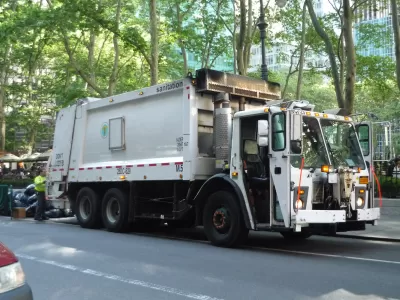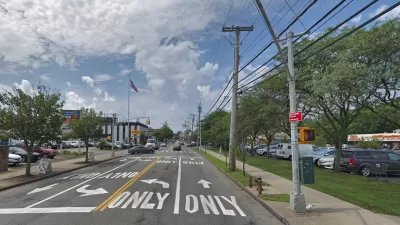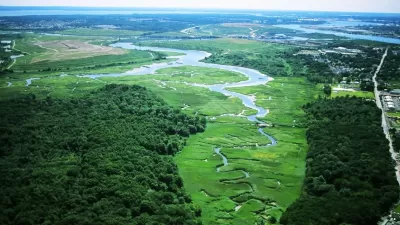The city had ambitious goals to reduce waste, but millions of tons of garbage are still sent to communities around the country each year.

As part of a series on New York City’s management of refuse, Sally Goldenberg and Danielle Muoio explore the city’s failed efforts to develop effective recycling and waste reduction programs.
In 2015, Mayor Bill de Blasio outlined a plan to drastically cut down the city’s waste. "The goal was to slash the 3.6 million tons of garbage the city shipped out in 2005 by 90 percent, so that by 2030 the five boroughs would export only a collective 360,000 tons of waste," say Goldenberg and Muoio.
But New York City continues to send huge amounts of waste to landfills and incinerators in communities across the country. In the past fiscal year, the city exported 3.25 million tons of residential waste, and recycling rates are low across the board.
The city depends on these facilities, especially after the closing of Fresh Kills, the Staten Island garbage dump. But residents in communities receiving New York City’s waste say they are suffering the public health and environmental consequences.
"Nearly two decades since Fresh Kills closed, there’s little indication the city is going to end its reliance on out-of-state landfills anytime soon. One former Bloomberg official warned that strategy is unsustainable," note Goldenberg and Muoio.
FULL STORY: Wasted Potential: The consequences of New York City's recycling failure

Maui's Vacation Rental Debate Turns Ugly
Verbal attacks, misinformation campaigns and fistfights plague a high-stakes debate to convert thousands of vacation rentals into long-term housing.

Planetizen Federal Action Tracker
A weekly monitor of how Trump’s orders and actions are impacting planners and planning in America.

In Urban Planning, AI Prompting Could be the New Design Thinking
Creativity has long been key to great urban design. What if we see AI as our new creative partner?

King County Supportive Housing Program Offers Hope for Unhoused Residents
The county is taking a ‘Housing First’ approach that prioritizes getting people into housing, then offering wraparound supportive services.

Researchers Use AI to Get Clearer Picture of US Housing
Analysts are using artificial intelligence to supercharge their research by allowing them to comb through data faster. Though these AI tools can be error prone, they save time and housing researchers are optimistic about the future.

Making Shared Micromobility More Inclusive
Cities and shared mobility system operators can do more to include people with disabilities in planning and operations, per a new report.
Urban Design for Planners 1: Software Tools
This six-course series explores essential urban design concepts using open source software and equips planners with the tools they need to participate fully in the urban design process.
Planning for Universal Design
Learn the tools for implementing Universal Design in planning regulations.
planning NEXT
Appalachian Highlands Housing Partners
Mpact (founded as Rail~Volution)
City of Camden Redevelopment Agency
City of Astoria
City of Portland
City of Laramie





























